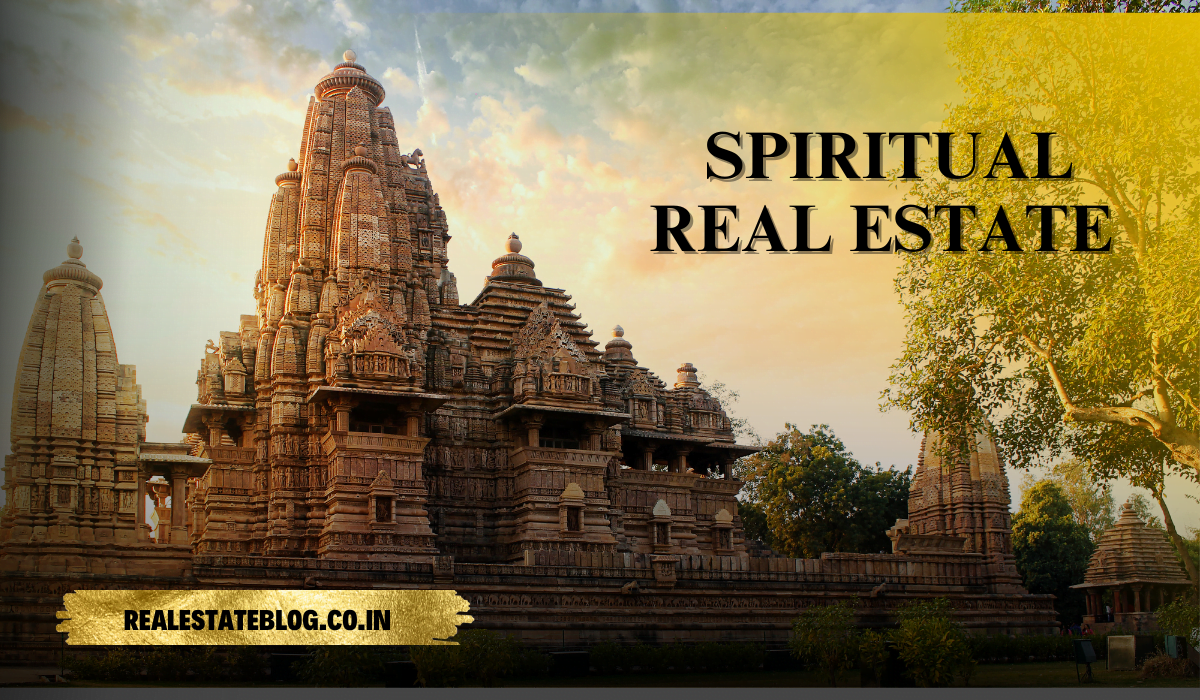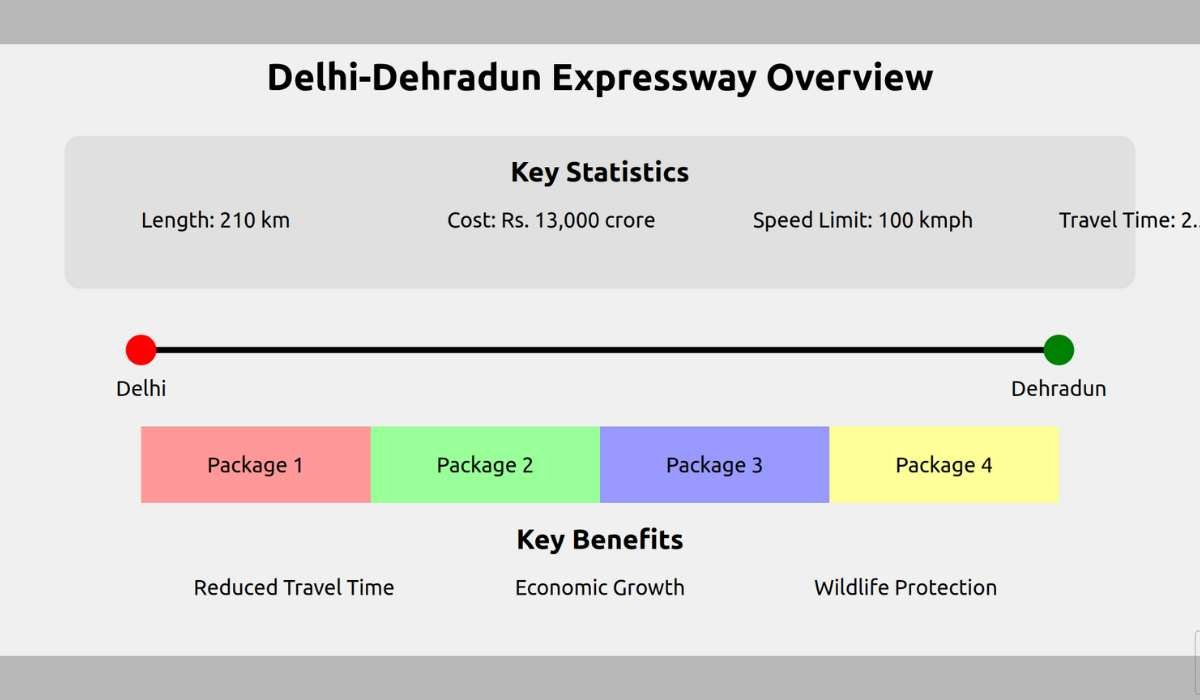India, a land steeped in spirituality and religious devotion, has witnessed a remarkable surge in religious tourism in recent years. The completion of iconic projects such as the Ram Mandir, Kashi Vishwanath Corridor, and Mahakaal Corridor has not only ignited the spiritual fervor among devotees but has also paved the way for a thriving real estate market in and around these religious sites. In this article, we delve into the economics behind the spiritual real estate boom, exploring the factors driving the unprecedented growth, the strategies employed by major real estate players, and the opportunities and considerations for investors and individuals alike.
The Demand-Supply Dynamics:
At the heart of the spiritual real estate boom lies the fundamental principle of demand and supply. Unlike other cities where demand and supply grow gradually, religious places experience an immediate and exponential surge in demand. Take the example of Ayodhya, where the opening of the Ram Mandir witnessed an astounding 5 lakh visitors on the first day alone, with a daily footfall of 2 lakh people thereafter. Similarly, the Kashi Vishwanath Corridor transformed the annual visitor count from 80 lakh to a staggering 7 crore, marking a nine-fold increase in just one year.
On the supply side, the land available near these religious sites is inherently limited. The prime locations, often in close proximity to the main temple, are finite and cannot be easily expanded. This scarcity of land, coupled with the overwhelming demand, inevitably leads to a rapid escalation in real estate prices. The rates skyrocket not only in the immediate vicinity of the temple but also in areas farther away, as seen in Ayodhya, where prices have multiplied by 10 to 20 times since the Supreme Court’s order.
The Big Players and Their Strategies:
The spiritual real estate boom has attracted the attention of major real estate groups and hotel companies, who are eager to capitalize on the immense potential of these religious destinations. These players are not just looking to acquire land but are investing in large-scale, comprehensive projects that cater to a wide range of needs and preferences.
One notable example is the House of Abhinandan Loda group, which has invested in a project called Saryu in Ayodhya. The group acquired a staggering 51 acres of land, with plans to develop a 31-acre villa project and dedicate the remaining land to high-rise apartments. The group’s ambition extends beyond Ayodhya, with a target to invest Rs. 3,000 crore in Uttar Pradesh, including projects in Vishwanath and Vrindavan. Additionally, they have set their sights on Amritsar and Manali, with a budget of Rs. 2 billion for each location. The group’s ultimate goal is to bring 400 properties to various spiritual places, including Ayodhya, Puri, Shirdi, Vaishnavi, and the four Dhamas.
The Diverse Real Estate Needs:
The spiritual real estate market caters to a diverse range of needs and preferences. From hotels for tourists to religious schools for the devout, from luxurious houses for the affluent to restaurants, shops, and markets for visitors, the demand for real estate is multi-faceted. This diversity ensures a constant flow of revenue and mitigates the risk for investors.
Unlock Your Dream Home Today!
Get personalized real estate insights delivered straight to your inbox.
The Government’s Role:
The spiritual real estate boom is not solely driven by private players; the government’s involvement plays a crucial role in fueling the growth. In the last decade, the Uttar Pradesh government has invested a whopping Rs. 25,000 crore in Ayodhya alone, with an additional Rs. 30,000 crore already spent in the surrounding areas. The government’s ambitious plans include the development of a 1000-acre township in Ayodhya, along with ongoing work on the Mathura, Vrindavan, Kamakhya, and Jagannath Puri corridors.
This substantial government investment instills confidence in private players, who view it as a sign of long-term commitment and potential for growth. The collaborative efforts of the government and private sector create a conducive environment for the spiritual real estate market to flourish.
The Risk-Free Nature of Spiritual Real Estate:
Investing in spiritual real estate is often considered a risk-free endeavor due to several factors:
- Constant Flow of Visitors: Spiritual places experience a consistent and ever-increasing flow of visitors. Unlike tourist destinations that may experience fluctuations, religious sites attract a steadily growing number of devotees year after year.
- Escalating Rates: The limited supply of land and the ever-increasing demand ensure that real estate prices in spiritual places will continue to rise. As prime locations get sold out, the remaining land becomes even more valuable, driving up prices further.
- Government Support: The government’s significant investment in infrastructure and development around spiritual sites provides a solid foundation for the real estate market. Private players can leverage this support and benefit from the overall growth of the area.
Considerations for Individual Investors:
While the spiritual real estate boom presents lucrative opportunities, individual investors should approach it with caution. The average person’s buying capacity may be limited to smaller plots of land, ranging from 10 to 20 acres, which may not yield the same returns as larger investments. Moreover, reselling smaller plots in the open market can be challenging, as the demand is primarily driven by big real estate companies and hotel groups.
For individuals looking to invest in spiritual real estate, it may be more prudent to wait for established real estate companies to develop properties and then invest in those projects. While the entry costs may be higher, the chances of appreciation and ease of resale are significantly better. Additionally, investing in developed properties ensures access to amenities and facilities that may not be available when buying raw land.
Conclusion:
The spiritual real estate boom in India is a testament to the enduring power of faith and the immense potential for growth in religious tourism. The completion of iconic projects like the Ram Mandir, Kashi Vishwanath Corridor, and Mahakaal Corridor has triggered an unprecedented surge in demand for real estate in and around these spiritual sites. The unique dynamics of limited supply and boundless demand have led to skyrocketing prices and attracted major players in the real estate and hospitality sectors.
As the government continues to invest heavily in infrastructure and development, and private players bring in their expertise and resources, the spiritual real estate market is poised for sustained growth. However, individual investors must tread carefully, considering their buying capacity and the challenges of reselling smaller plots. Investing in developed properties by reputable real estate companies may offer a more secure and rewarding path.
The spiritual real estate boom is not just about brick and mortar; it is a reflection of India’s deep-rooted religious sentiments and the aspirations of millions of devotees. As the market evolves and matures, it has the potential to transform the economic landscape of these spiritual destinations, creating jobs, boosting tourism, and fostering a sense of pride and belonging among the faithful.
In the end, the spiritual real estate boom is a testament to the enduring power of faith and the unwavering devotion of the Indian people. It is a reminder that in a land where spirituality is interwoven with every aspect of life, the real estate market is not just about financial gains but also about fulfilling the deepest desires of the soul.
The surge in religious tourism due to iconic projects like the Ram Mandir and Kashi Vishwanath Corridor, coupled with the limited availability of land near these sites, are primary factors driving the boom.
Unlike other cities where demand grows gradually, spiritual places experience immediate and exponential demand, as evidenced by massive visitor turnout at sites like Ayodhya.
Major players are investing in large-scale projects that cater to various needs, including hotels, residential properties, and commercial spaces, often acquiring substantial land for development.
Government investment, such as the Rs. 25,000 crore spent in Ayodhya, instills confidence in private players and helps create a conducive environment for real estate growth.
Investing is considered risk-free due to the constant flow of visitors, escalating land prices due to limited supply, and strong government support for infrastructure development.
Individual investors should be cautious due to limited buying capacity for smaller plots and the challenges of reselling. It may be wiser to invest in developed properties by reputable companies.
The annual visitor count at the Kashi Vishwanath Corridor skyrocketed from 80 lakh to 7 crore, indicating a nine-fold increase in just one year.
The market caters to a variety of needs, including hotels for tourists, religious schools, luxurious homes, restaurants, shops, and markets for visitors.
Many companies aim to expand their portfolios significantly, with goals like the House of Abhinandan Loda group planning to invest Rs. 3,000 crore in Uttar Pradesh and develop 400 properties in various spiritual locations.
The boom is a testament to India's deep-rooted religious sentiments, showcasing the blend of spirituality with economic growth and the aspirations of millions of devotees.
DISCLAIMER
The information provided on this website is for general informational purposes only. While we strive to keep the content up-to-date and accurate, we make no representations or warranties of any kind, express or implied, about the completeness, accuracy, reliability, suitability, or availability of the information, products, services, or related graphics contained on this website.
In no event will we be liable for any loss or damage including without limitation, indirect or consequential loss or damage, or any loss or damage whatsoever arising from loss of data or profits arising out of, or in connection with, the use of this website.
Real Estate Investment Risks
Real estate investments involve significant risks and market volatility. Property values, rental rates, and market conditions can fluctuate. Past performance is not indicative of future results.
Before Making Real Estate Decisions
Before making any real estate decision, we strongly advise you to:
- Conduct thorough due diligence
- Consult with qualified legal, financial, and real estate professionals
- Carefully review all relevant documents and contracts
- Consider your personal financial situation and investment goals
This website does not provide legal, financial, or investment advice. All content is for informational purposes only and should not be construed as professional advice or recommendations.
By using this website, you acknowledge and agree to these terms. We reserve the right to modify this disclaimer at any time without notice.







